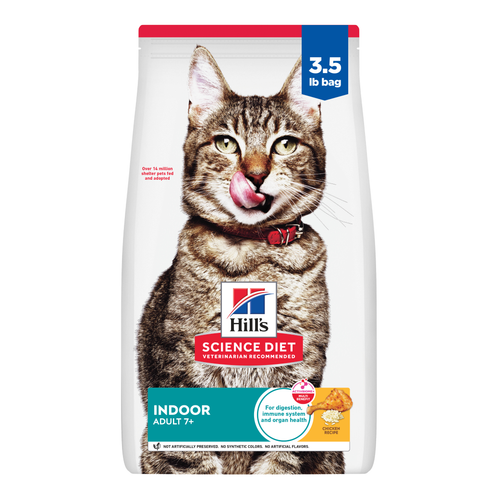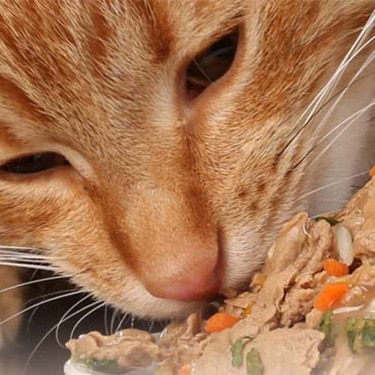
-
Find the right food for your petTake this quiz to see which food may be the best for your furry friend.Find the right food for your petTake this quiz to see which food may be the best for your furry friend.Featured products
 Adult Large Breed Chicken & Barley Recipe Dog Food
Adult Large Breed Chicken & Barley Recipe Dog FoodSupports healthy joints, lean muscle, and beautiful coat for large breed dogs
Shop Now Hill's Science Diet Adult Chicken & Beef Entrée Dog Food
Hill's Science Diet Adult Chicken & Beef Entrée Dog FoodChicken & Beef Entrée in a delicious loaf with complete & balanced nutrition to help keep adult dogs active and healthy
Shop Now Adult Chicken & Barley Recipe Dog Food
Adult Chicken & Barley Recipe Dog FoodSupports lean muscle and beautiful coat for adult dogs
Shop NowFeatured products Adult Turkey & Liver Entrée Cat Food
Adult Turkey & Liver Entrée Cat FoodPrecisely balanced nutrition with the delicious taste of minced turkey & liver to help fuel the energy needs of cats during the prime of their life
Shop Now Senior Vitality Adult 7+ Tuna & Vegetables Stew
Senior Vitality Adult 7+ Tuna & Vegetables StewImproves Everyday Ability to Get Up & Go
Shop Now Adult 7+ Indoor Chicken Recipe Cat Food
Adult 7+ Indoor Chicken Recipe Cat FoodSupports energy level and beautiful fur in mature indoor cats
Shop Now -
Dog
- Dog Tips & Articles
-
Health Category
- Weight
- Food & Environmental Sensitivities
- Urinary
- Digestive
- Joint
- Kidney
-
Life Stage
- Puppy Nutrition
- Adult Nutrition
- Senior Nutrition
Cat- Cat Tips & Articles
-
Health Category
- Weight
- Skin & Food Sensitivities
- Urinary
- Digestive
- Kidney
-
Life Stage
- Kitten Nutrition
- Adult Nutrition
Featured articles The Science Behind Our Love for Pets
The Science Behind Our Love for PetsLearn the scientific reasons why we have such strong connections with our pets, and what science says about the love between humans and our furry friends.
Read More How to Properly Mix Wet & Dry Pet Foods
How to Properly Mix Wet & Dry Pet FoodsAn Orange cat eating from a bowl filled with mixed food
Read More What Is Littermate Syndrome? Pet Adoption Guide
What Is Littermate Syndrome? Pet Adoption GuideLearn more about littermate syndrome in dogs and cats and how to successfully navigate adoption and early socialization processes.
Read More -


Commonly known as the invisible killer, carbon monoxide is an odorless, colorless and non-irritating gas that can be dangerous if inhaled in sufficient quantity. What many pet parents may not realize is that cats and other pets are at just as much risk as people. Let's take a look at what carbon monoxide is as well as the signs of carbon monoxide poisoning in cats.
Causes of Carbon Monoxide Poisoning
Carbon monoxide (CO) is a gas that is produced any time a fossil fuel is burned. Carbon monoxide is produced by burning fuel in cars, trucks, engines, stoves, grills, fireplaces, gas ranges, furnaces and lanterns. If carbon monoxide builds up indoors, it can cause sudden illness and death in humans and pets. Poorly ventilated areas with any source of carbon monoxide, such as an oven, BBQ or fireplace, improperly vented furnaces, gas or kerosene heaters, and gas water heaters or house fires are all potential sources of carbon monoxide.
Carbon monoxide poisoning is the leading cause of unintentional poisoning deaths in people in the United States. The Center for Disease Control (CDC) estimates that carbon monoxide poisoning is the reason for approximately 400 human deaths annually in the U.S. and 20,000 emergency department visits. While we don't have statistics on how many house pets are affected every year by carbon monoxide poisoning, we do know that, according to the American Veterinary Medical Association, about 25% of U.S. households have cats. Therefore, cats are likely affected by many of the reported carbon monoxide poisoning cases.

Signs of Carbon Monoxide Poisoning in Cats
Carbone monoxide poisoning interferes with the blood's ability to carry oxygen. It can cause different signs based on whether a cat is exposed to a large amount of carbon monoxide all at once, such as being trapped in a garage with a car running, or small amounts over a long period of time.
Signs associated with acute (all of a sudden) carbon monoxide toxicity can include:
- Loss of energy or acting excessively sleepy
- Red gums or red skin
- Incoordination or clumsiness
- Seizures
- Difficulty breathing
Signs associated with chronic (long term) exposure to carbon monoxide can include:
- Vomiting
- Loss of appetite
- Cough
- Loss of energy
- Deafness
- Blindness
Cats who have any pre-existing heart or lung problems are at an increased risk for carbon monoxide poisoning. If you suspect that your cat has carbon monoxide poisoning, do not waste any time: Take your cat to your closest emergency veterinary hospital for examination and treatment.


Tasty Tips
Diagnosis and Treatment for Cats with Carbon Monoxide Poisoning
Carbon monoxide poisoning is diagnosed with a combination of oral history, physical examination and laboratory testing. Blood samples will likely be drawn immediately, and your veterinarian will administer oxygen to your cat. Tests for carbon monoxide poisoning typically include a complete blood count, blood chemistry, blood gas analysis and blood pH testing. An electrocardiogram and chest radiographs (X-rays) may also be recommended.

Carbon monoxide poisoning is treated by providing oxygen to the brain and heart. Oxygen may be provided via a mask, an oxygen cage, or if your cat is unconscious, by a breathing tube. Hyperbaric chamber therapy can speed recovery, and your veterinarian may also administer intravenous fluid therapy to support your cat's recovery.
Preventing Carbon Monoxide Poisoning
The best way to keep yourself and your pets safe from carbon monoxide is by knowing the facts and taking preventive measures. These measures can not only save your cat but may save your life as well.
- A carbon monoxide (CO) detector should be installed on every level of your home where you can hear it if it goes off, even in the middle of the night. Check the batteries twice a year, and replace the detectors every five years.
- Have your furnace, boiler or water heater as well as any other coal, gas, oil or wood-burning appliances checked and serviced by a qualified technician every year.
- Refrain from using portable flameless chemical heaters indoors.
- If you smell an odor from your gas refrigerator, have it serviced by a qualified technician.
- Check with an expert to ensure that all gas appliances are properly vented.
- Check and clean your chimneys yearly.
- Do not use a gas range or oven for heating and never burn charcoal or use a portable gas camp stove indoors.
- Do not use a generator indoors or less than 20 feet from any window, door or vent. If you do use a generator, make sure you have a working battery-powered or battery backup carbon monoxide detector in your home.
- Never run gas engines in a closed area or close to air intake vents.
With a few adjustments, you can dramatically reduce you and your pet's risk of carbon monoxide poisoning. Remember, if you ever have any questions about your pet's health or behavior, do not hesitate to contact your local vet.


Dr. Sarah Wooten graduated from UC Davis School of Veterinary Medicine in 2002. A member of the American Society of Veterinary Journalists, Dr. Wooten divides her professional time between small animal practice in Greeley, Colorado, public speaking on associate issues, leadership, and client communication, and writing. She enjoys camping with her family, skiing, SCUBA, and participating in triathlons.
Related products

Supports energy level and beautiful fur in mature indoor cats

Delectable chunks with tender chicken smothered in a rich gravy

Improves Everyday Ability to Get Up & Go

Precisely balanced nutrition with the delicious taste of minced turkey & liver to help fuel the energy needs of cats during the prime of their life
Related articles

When you adopt a cat, you don't just gain a best friend; you also save her life. Here's why getting a cat from a local animal shelter makes so much sense.

Discover which cat toys games your feline friend might like, and how they are great sources of exercise. Explore our library of articles to learn more.

Learn how to litter train a kitten with this guide to potty training, including when to start litter training kittens and troubleshooting tips.

Discover how to train your cat, starting with very basic first steps that both reward good behavior and discourage the bad.

Put your cat on a diet without them knowing
Our low calorie formula helps you control your cat's weight. It's packed with high-quality protein for building lean muscles, and made with purposeful ingredients for a flavorful, nutritious meal. Clinically proven antioxidants, Vitamin C+E, help promote a healthy immune system.
Put your cat on a diet without them knowing
Our low calorie formula helps you control your cat's weight. It's packed with high-quality protein for building lean muscles, and made with purposeful ingredients for a flavorful, nutritious meal. Clinically proven antioxidants, Vitamin C+E, help promote a healthy immune system.

